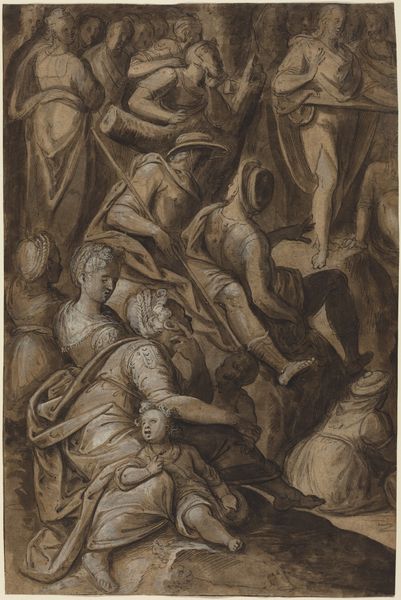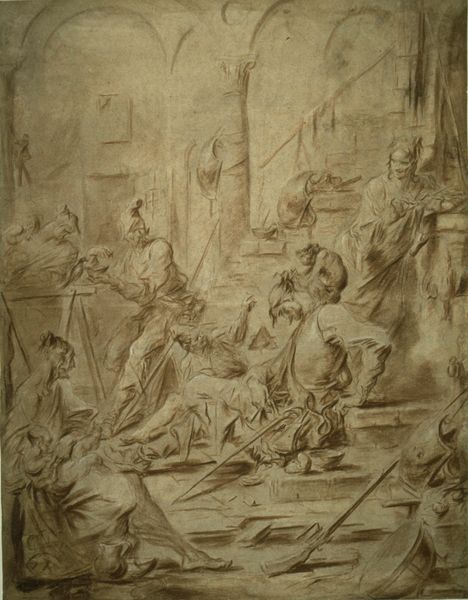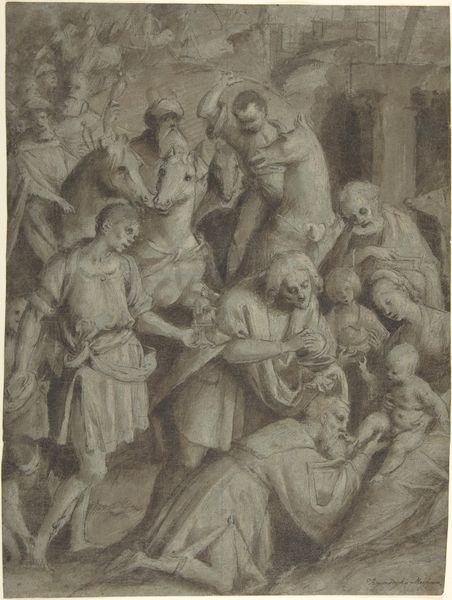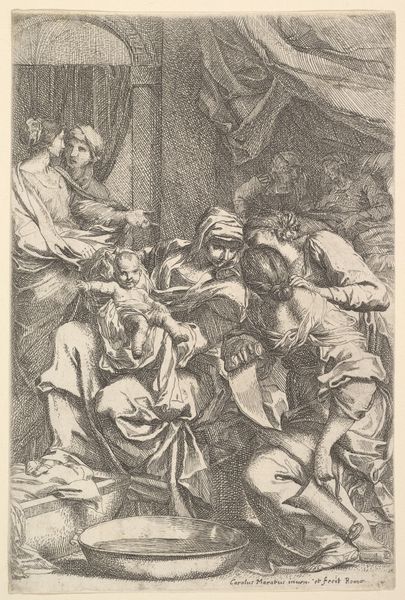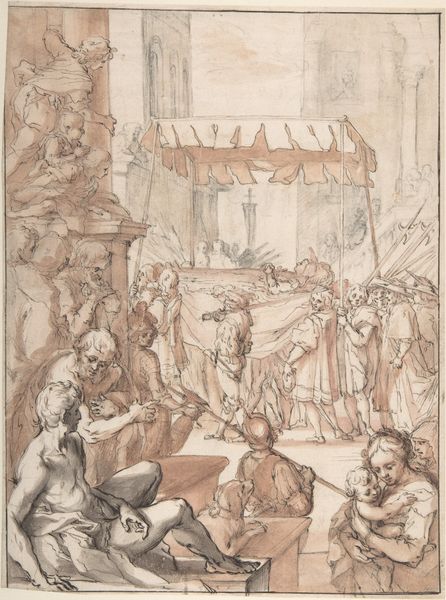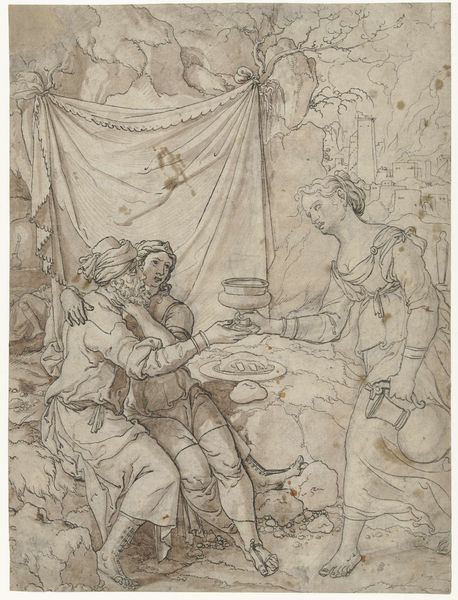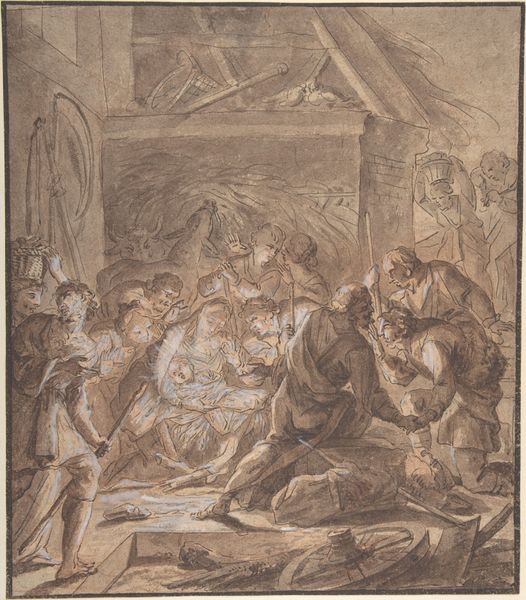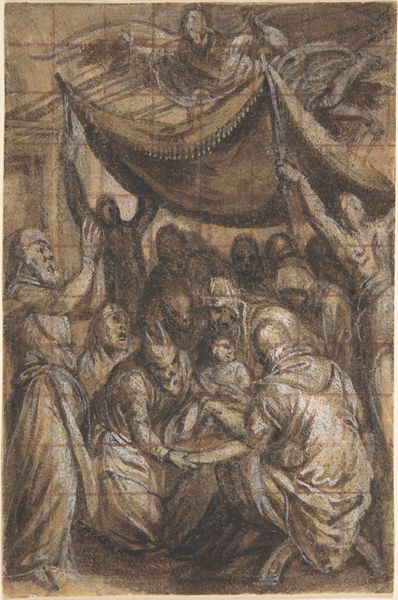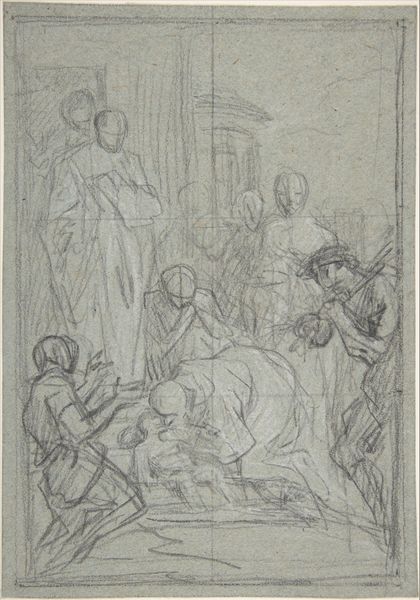
drawing, tempera, print, ink, pencil, pen, engraving
#
drawing
#
tempera
# print
#
charcoal drawing
#
mannerism
#
figuration
#
11_renaissance
#
ink
#
pencil drawing
#
pencil
#
pen
#
history-painting
#
northern-renaissance
#
engraving
#
angel
#
christ
Dimensions: 11-7/8 x 8 in. (30.2 x 20.3 cm)
Copyright: Public Domain
Editor: Here we have "The Christ Child Adored by Angels," a drawing attributed to Gottfried de Wedig, made sometime between 1590 and 1641. It's ink, tempera, and pencil on paper. There's so much going on in this image; it looks incredibly detailed. What can you tell me about this work? Curator: Well, let’s consider the materials themselves. The choice of ink, tempera, and pencil suggests a process rooted in accessibility and widespread production. Drawings like these weren’t necessarily unique objects of high art. They were often studies for larger works or disseminated as prints. Editor: So, like a blueprint, almost? A tool for mass production? Curator: Exactly! Think about the role of workshops in this era. Drawings would circulate amongst artisans, dictating not just the imagery, but also influencing the division of labor. Did de Wedig conceive and execute this entirely alone, or did workshop assistants contribute, each with their specific skill set, to the hatching, the figure drawing, the application of tempera wash? How might that influence the finished piece? Editor: That's a totally different way of thinking about it. I tend to focus on the overall image, the religion behind it, or maybe the artist's intention. Curator: But the means of production themselves carry cultural weight. Consider the accessibility of prints compared to paintings; it democratized religious imagery and influenced devotional practices on a broader social scale. What happens when the spiritual is mediated by craft? Editor: So, it's less about individual genius and more about collective making and the spread of ideas through readily available materials. Curator: Precisely. Examining the materials and techniques allows us to trace the networks of labor and exchange that shaped not just the image, but the spiritual experience of its audience. It grounds our understanding of art within the broader context of production and consumption. Editor: Okay, I’m going to pay way more attention to the medium from now on. It is not just what it’s made of, but who made it, and who could get to see it.
Comments
No comments
Be the first to comment and join the conversation on the ultimate creative platform.

